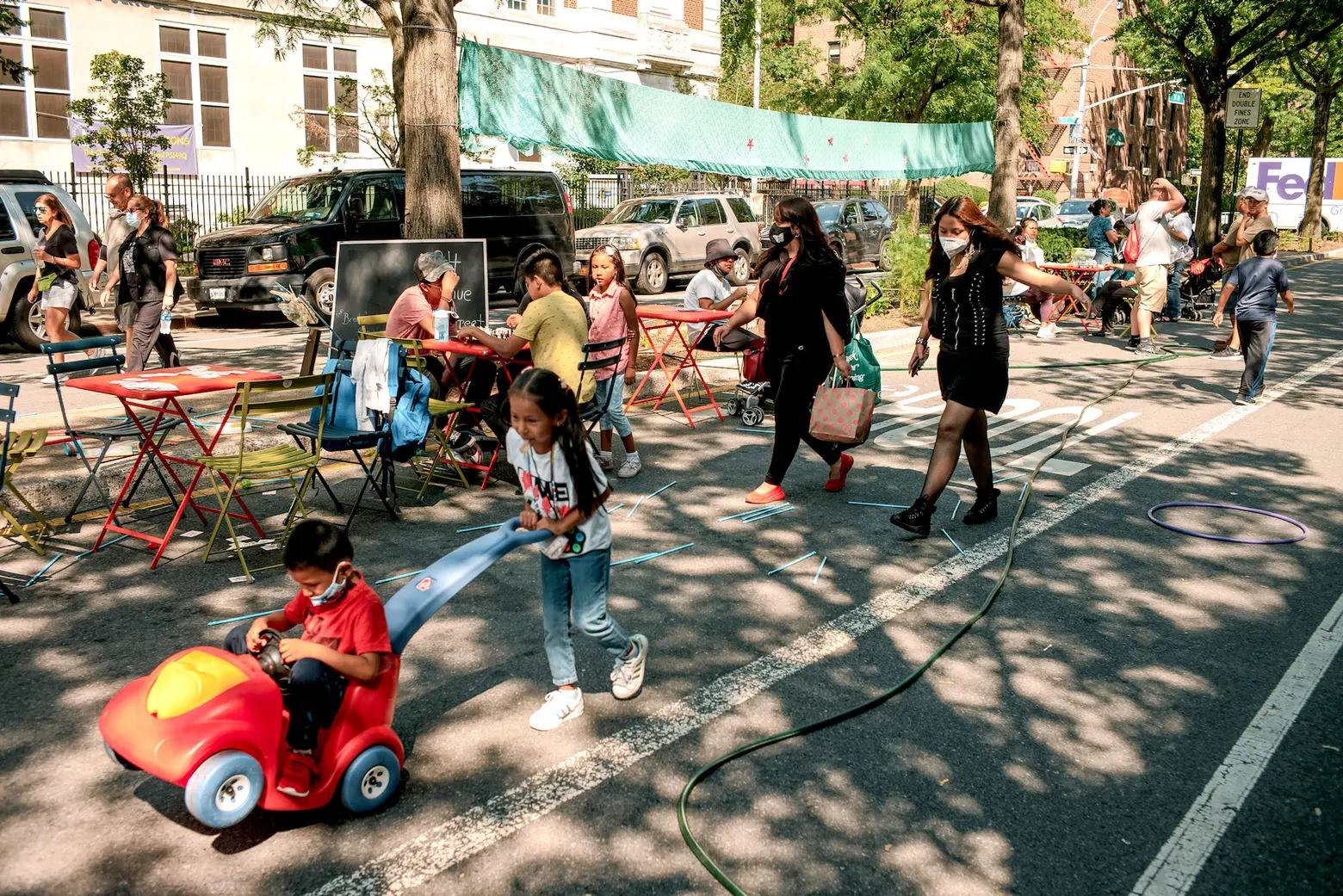NYC’s open streets program falls short of 100-mile promise, report says

Photo: Transportation Alternatives
In the summer of 2020, Mayor Bill de Blasio announced the city would close 100 miles of streets to cars for use by pedestrians, a policy formed in response to the pandemic and the need for safe, socially distanced outdoor space. Over a year later, just over 24 miles of Open Streets are currently active, according to a report released this week by the advocacy group Transportation Alternatives (TA).

Chart: Transportation Alternatives
TA developed the report by sending out hundreds of volunteers this summer to every open street listed on the city’s Department of Transportation website. Based on the data collected, of the city’s 274 open streets, only 126 of them were found by surveyors to be “active,” defined by examining the number of cars that drove down the street and if any barricades were installed.
According to the group, 126 open streets equals just over 24 miles, a quarter of the 100 miles promised by the mayor last year and just 0.04 percent of the city’s total 6,300 miles of streets.
Although de Blasio pledged to make open streets accessible to all New Yorkers, the report finds a lack of equity in where the program operates. Of those in operation today, 33.7 percent of open streets are in Manhattan, 32.3 percent are in Brooklyn, 25.5 percent are in Queens, 6.3 percent are on Staten Island, and just 2.2 percent are in the Bronx.
Residents in Manhattan have access to 1,409 percent more miles of active open streets than Bronx residents, according to the report.
New Yorkers like the open streets program so much that volunteers helped operate them and raise money to support their local open street. A poll conducted by Siena College for TA found 63 percent of New York City voters supported closing streets to cars.
“This report makes one thing clear: New Yorkers love Open Streets, and they want to see them succeed. However, Mayor de Blasio has broken his promise to expand the program equitably,” Danny Harris, Executive Director of TA, said in a press release.
“All communities deserve Open Streets and the health, climate, and safety benefits they provide. The future of New York City streets must be built around people, not cars, and Open Streets are a key tool to reach our NYC 25×25 vision. We demand that New York City elected officials make urgent changes to ensure the Open Streets program has the support it needs to succeed and grow, especially in communities currently left out.”
The mayor last March launched a “Safe Streets” pilot program that closed about 1.6 miles of open streets. The program was ended less than two weeks later by de Blasio who said the program led to an overuse of NYPD. The City Council introduced a law to make the city open 75 miles of streets for pedestrian and cyclist use. The mayor had a change of heart and agreed to open 100 miles of open streets.
This past spring, the Council passed legislation requiring the city to develop a plan making open streets a permanent fixture in New York, along with support and funding from the city. Signed by de Blasio, the new law, which requires DOT to manage or provide resources for at least 20 open streets, is expected to take effect this month.
TA is calling on the city to do more by making every open street permanent with “substantial infrastructure,” lengthening all open streets to at least a half-mile, closing streets to cars outside every city school, and prioritizing funds to neighborhoods that need them most.
“Open Streets has been a transformational program for our City, reclaiming our streets for children, seniors, and communities,” City Council Speaker Corey Johnson said.
“I’m proud of this Council for pushing for an open streets plan and playing a pivotal role in making it a reality in the last 20 months. It’s critical that we recommit to our Open Streets infrastructure now and in the years to come, and make sure we are providing this space equitably across the City. Our streets belong to our people, and we need to keep it that way.”
RELATED:




























